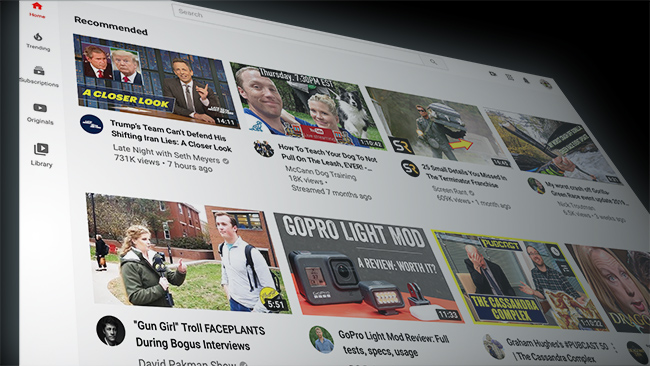

Filmmaking gear and video distribution is easier than it ever was before, so why is it harder than ever to produce a successful film?
Lots of people would like to make movies according to their own tastes for a living, and for a while, it was possible to go directly into business producing films and selling them to distributors. In extremis, it still is but in the 2000s the advent of inexpensive digital filmmaking democratised the direct approach to the point that it’s now hard to stand out. Then, online video distribution presented another opportunity: it had never been easier to get material in front of an audience. In the end, of course, that became another haystack through which to search for needles and it’s still hard to get noticed.
The question is whether this is a natural progression and whether there’s anything to be learned from history about what might be next.
When Robert Rodriguez published Rebel Without a Crew in 1995, it became a bible for exactly this sort of DIY filmmaker. Most people are still smart enough to realise that only a few dozen people on the planet are ever likely to be funded by others to pursue their dreams and that getting there requires not only ability and application but also a generous helping of – without any pejorative intent – luck. It’s not a career path anyone should plan for, really.
Still, Rodriguez may have had to pay for it himself, but he got to make his movie. The problem is that this sort of independent filmmaking was viable mainly because of its comparative rarity. In 1995 – let alone in ‘92 when El Mariachi was first shown at TIFF - the technological and financial gatekeepers of traditional cinema were largely still in place. Affordable HD was a decade away, 24-frame desktop editing was rudimentary, and the idea of a complete beginner pitching a distributor with a trailer and a lot of confidence still had the advantage of novelty.
Market saturation
By the mid-90s, it was much easier to do what Rodriguez had done and by the turn of the century, cutting standard-definition video on a cheap workstation was trivial. This did not lead to a flood of El Mariachi-style success stories because Rodriguez’s access to distribution was rare even at the time and quickly became rarer. The ideas in his book might not have been obsolete at publication but were hopelessly out of date less than ten years later when that market for cheap action films had become utterly flooded. The storm of interest provoked by Rodriguez’s conspicuous success might even have had an influence itself. Rebel is a hugely entertaining read, but it’s not a career guide.
No problem, we might say. There’s YouTube. Distribution has never been easier. There has never been any broadcast system that has the potential audience of the internet and it’s available to everyone for (sort of) free. That is, of course, also the problem. When YouTube first launched, a short film might attract attention based on the merit of the production. Now, it’s a relentless, churning tidal wave of clickbait, unboxing and reaction, with a stellar maximum quality but an average quality that’s downright emetic. Ability, at least in the sense of conventional filmmaking, is irrelevant.
There is a certain simplicity to it. The success of YouTube as a platform relates directly to the success of the people who distribute on it. That sounds good, even if we accept that “success” is equivalent to “view count”. We must also accept, though, that YouTube cares about creating a maximum total amount of success. It does not care about allocating that success on the basis of artistic or social merit. It cares about viewership. Whatever anyone’s opinion of that model, it means that the internet is, at best, a capricious, unpredictable market for audiovisual material.

Online streaming sites have made distribution easier, but getting noticed harder
Content filtering
That market may not even reflect the desires of the viewer which are filtered through the inner workings of sites like YouTube. These workings, being highly automated, may not be fully understood even to YouTube. They’re certainly not widely understood by wannabe YouTube auteurs, who in some circumstances stand to have material – or even an entire channel, perhaps representing a livelihood – taken offline by automated systems without explanation. Whether YouTube really cares about creating stars in the same way that conventional media does isn’t clear. Given enough well-targeted eyeballs, it’s not particularly difficult to create a star and YouTube has some of the most laser-targeted ability that’s ever existed to suggest content to consumers.
In the end, though, for anyone interested in conventional, single-camera narrative filmmaking, online distribution is no more reliable an approach than rocking up at AFM [https://americanfilmmarket.com/ with a cheaply-made feature to sell. That’s true, even if we accept that YouTube is not really a place for 90-minute features; it is, perhaps ironically, the first-ever arena in which short subjects (and most YouTube videos are fundamentally documentary shorts) have become a major profit centre for anyone. Still, the sheer volume of content, at 500 hours a minute in May 2019, encourages ever more desperate acts of attention-seeking from hopefuls.
The DIY Rodriguez approach and access to technology changed the rules. Online distribution changed the rules. Both of those, however, are now past-tense events; they both still exist but they’re far from novel. The route to the promised land of making your movies with someone else’s money is no easier than it ever was and in some ways, that’s reassuring. It’s still difficult to become James Cameron.
And really, shouldn’t it be?
Tags: Production


Comments